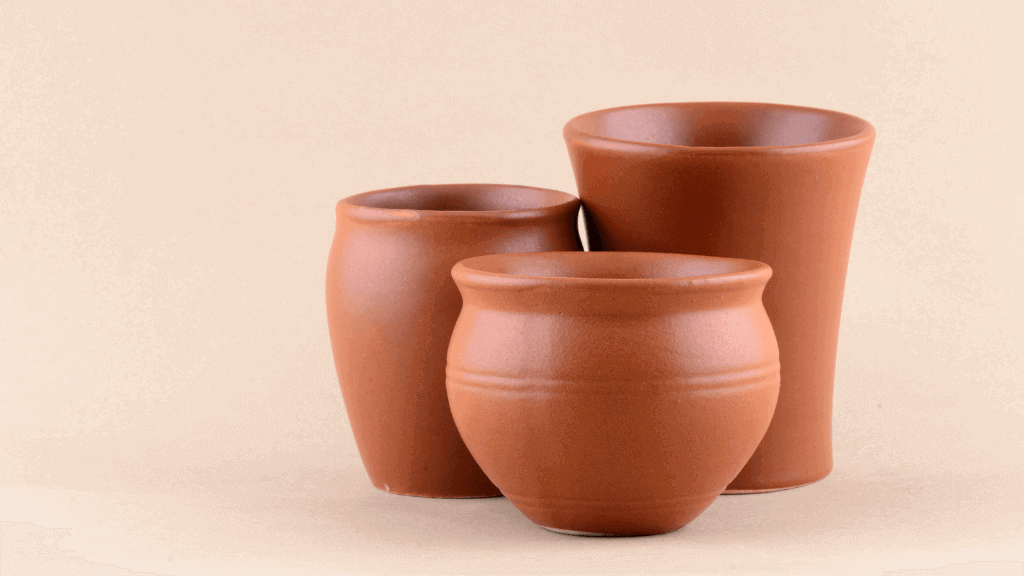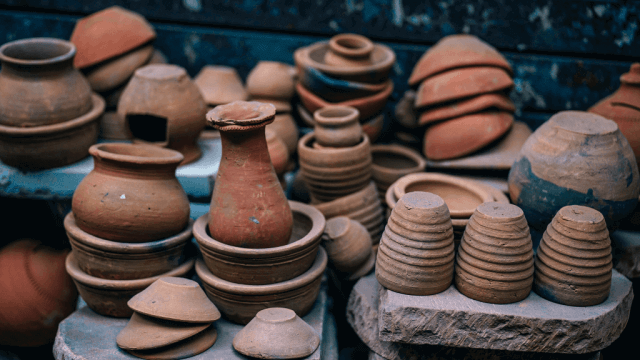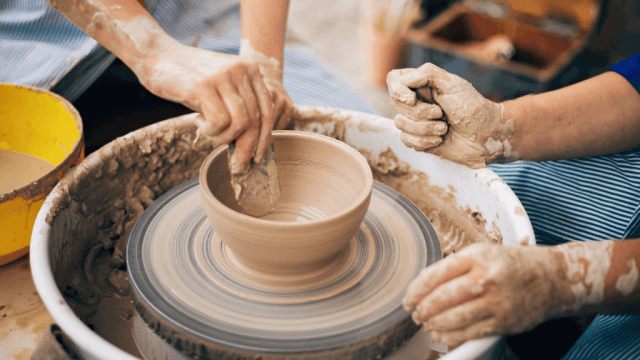Redware pottery is a type of earthenware pottery with a distinct reddish-brown color due to its high iron content clay. It was historically produced in many parts of the world and is valued for its decorative and functional purposes. Redware can be glazed or unglazed, with glazes ranging from clear to vibrant colors like green and yellow created with the addition of metal oxides.
Introduction to Redware Pottery
Redware pottery is a type of earthenware pottery that gets its characteristic reddish-brown color from the high iron content in the clay. Historically produced across various regions worldwide, redware displays a stunning range of decorative and functional pieces.
Redware Clay Composition and Firing Process
The primary component of redware is a clay body rich in iron oxide, which imparts a distinctive red hue to these wares. Typically, redware pottery is fired at a lower temperature, between 1800-2000°F (about 1000-1100°C), making it more porous than stoneware or porcelain.
Glazes and Surface Decoration in Redware
Though redware can be left unglazed, many pieces feature a variety of glazes, from clear to colorful. Adding metal oxides creates vibrant colors like green copper oxide and yellow lead oxide. Unglazed redware is more prone to absorbing water due to its porosity.
Slip Decoration
A popular technique in redware pottery is slip decoration, which involves coating the vessel with a liquid clay mixture known as slip. Intricately designed patterns can be achieved by brushing, dripping, or trailing decline onto the surface before firing.
Sgraffito
Sgraffito is another decorative technique common in redware, where artists scratch designs through the applied slip layer, revealing the contrasting clay body beneath. This Sgraffito pottery technique creates a visually striking effect and adds depth to the pottery’s design.
Historical Context and Production Regions
Redware pottery has been produced in multiple regions globally, including Europe, Asia, Central and South America, and the United States. In the United States, redware production thrived from the 17th to the mid-19th century, particularly in Pennsylvania and New England. European redware often features intricate designs and motifs, whereas American redware is known for more simplistic, practical designs.
Functional Uses and Collecting Redware
With a rich history and diverse range of styles, redware pottery is an attractive option for collectors and pottery enthusiasts. Primarily intended for functional use like storage, cooking, and serving, redware’s rustic charm makes it an appealing choice for home decor. When purchasing redware pottery, please ensure that any antiquities or vintage pieces are free from cracks, chips, or significant damage to maintain the item’s value.
Troubleshooting and Caring for Redware Pottery
Due to its permeable nature, redware pottery is susceptible to absorbing moisture and chipping. To maintain the longevity of your redware pottery, avoid exposing it to sudden temperature changes or using it for cooking on direct heat sources. Handwashing redware items using mild soap and water is recommended. Allow redware pottery to dry thoroughly before storing to prevent mold growth.
Diverse Styles and Techniques in Redware Pottery
Beyond the traditional slip decoration and sgraffito techniques, redware exhibits regional variations in design and style. For example, Pennsylvania German redware often features colorful, whimsical motifs, while North Carolina’s Moravian potters are known for their intricate dolphins and flowers. This diversity offers collectors and enthusiasts many options to explore and appreciate redware pottery’s unique history and artistic expressions.
Revival of Redware Pottery
In recent years, interest has been resurgent in traditional redware pottery techniques. Contemporary artisans are experimenting with traditional methods and adapting them to create modern and unique pieces. This revival celebrates the rich history of redware pottery and ensures that its fantastic artistry and techniques are preserved for future generations.
Designing Your Own Redware Pottery
If redware’s beauty and charm inspire you, consider learning how to create your redware pottery. Many pottery studios and art schools offer classes where you can learn traditional techniques, like working with red clay and slip decoration. Remember to research the unique characteristics of your chosen clay body, as different clays can lead to different outcomes when firing.
FAQs: Redware Pottery
Below, we’ve answered several frequently asked questions about redware pottery to provide valuable information for collectors, enthusiasts, and those looking to learn or create their redware pieces.
What is the difference between redware and terracotta pottery?
Redware and terracotta share a reddish color due to the high iron content in the clay. However, terracotta is typically fired at higher temperatures, making it less porous and more durable than redware. Additionally, terracotta pottery often exhibits more simplistic designs, while redware may showcase intricate and colorful patterns using a variety of glazes and techniques.
Is redware pottery food safe?
Redware pottery is generally food-safe when made with lead-free glazes. However, it’s essential to ensure that any pieces intended for use with food are appropriately labeled, as older or antique redware pottery may contain lead-based glazes. Due to its porosity, unglazed redware pottery is generally not ideal for food storage or serving liquid dishes, as it may absorb water and stains over time.
Can redware pottery be used outdoors?
Redware pottery can be used outdoors in sheltered locations that do not experience extreme temperature changes or prolonged exposure to moisture. However, due to its porous nature, redware is less ideal than stoneware or porcelain for outdoor use, as it may absorb water and suffer from freeze-thaw damage in cold climates.
How can I tell if a piece of redware pottery is valuable or antique?
When determining the value of redware pottery, consider the age, rarity, condition, and markings or signatures. Look for intact pieces free from significant cracks, chips, or repairs. Age and authenticity can often be determined by examining the potter’s marks, glazes, and decorative techniques. Consult reputable resources, books, and experts to help identify and evaluate antique redware pottery.
Where can I buy redware pottery?
Redware pottery can be found at antique stores, estate sales, auctions, or online retailers specializing in vintage ceramics. Additionally, contemporary redware artisans may sell their creations at pottery studios, art fairs, or via their websites. When purchasing redware, please evaluate the condition and authenticity of the piece, primarily when investing in antiques or collectibles.











